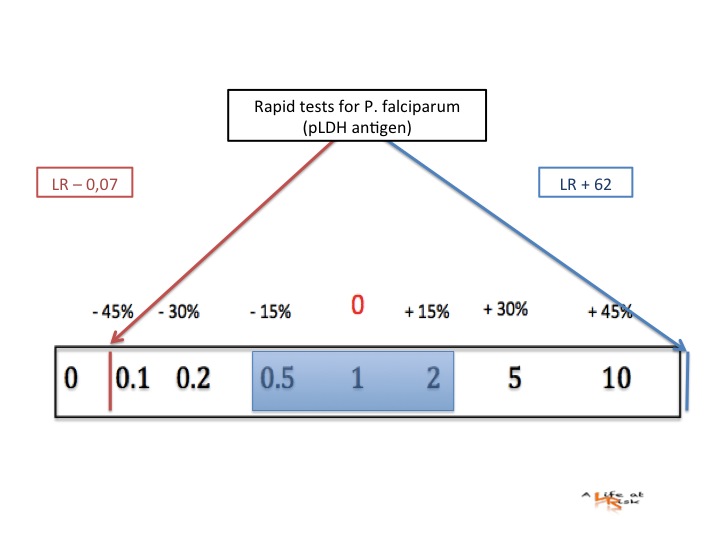A 35 y/o man is brought to the ED by friends and left there alone, he has high fever, he is from Ghana and he has just arrived, he speaks english not so well and he is confused and agitated, so anamnesis is very difficult and you catch a only word “malaria”, you also know that africans often calls malaria every fever, but …
Clinical examination is normal except for the agitation state, but fever is very high (40,5°C), he has not headhache, no cough, no abdominal pain. It is night and microbiologist is not available for malaria microscopy test and you decide to perform, for the first time in your life, the rapid test…it is negative…
Can you trust it or the patient?


Conclusion
The sensitivity and specificity of rapid tests depend on antigen used and parassitemia, but in general they perform very well and could replace or extend standard microscopy. New interesting studies are performed with the use of combined test with encouraging results.
Bibliography
Katharine Abba et al
Rapid diagnostic tests for diagnosing uncomplicated P. falciparum malaria in endemic countries
Cochrane Infectious Diseases Group Published Online: 6 JUL 2011
Mohon et al.
Evaluation of the OnSite (Pf/Pan) rapid diagnostic test for diagnosis of clinical malaria
Malaria Journal 2012
Heutmekers et al
Evaluation of the malaria rapid diagnostic test SDFK90: detection of both PfHRP2 and Pf-pLDH
Malaria Journal 2012
Sun Xiaodong et al
Diagnostic performance of CareStartTM malaria HRP2/pLDH (Pf/pan) combo test versus standard microscopy on falciparum and vivax malaria between China-Myanmar endemic borders
Malaria Journal 2013


